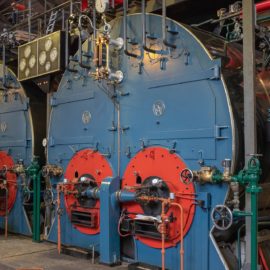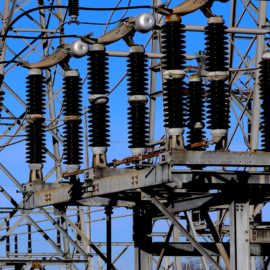
Entergy has backed out. The pumps are out dated as is their electrical source. What is the current status?
After Entergy confirmed last week it was no longer committed to financing a power substation for the Sewerage & Water Board, city leaders’ attention has turned yet again to one of New Orleans’ critical infrastructure needs: supplying reliable power to the system of drainage pumps that prevent street flooding during storms. Entergy New Orleans said uncertainty concerning Hurricane Ida damage costs had forced it to ice plans, announced in June, to front $34 million for substation construction. While searching for other funding possibilities, officials have acknowledged that a substation won’t be finished in 2023 as originally planned. That means at least two hurricane seasons loom with an S&WB power system that Executive Director Ghassan Korban acknowledges just barely got through Ida.
nola.com
How bad is it? Will we survive? Will the pumps work when needed?
But Korban says that the S&WB drainage network is in better shape than last hurricane season and is poised for upgrades that should put it in a more secure position in 2023. “I’m confident that everything that we are charting is realistic, reasonable, and we’re confident we’re going to deliver,” Korban said in an interview last week. The S&WB’s biggest concern ahead of this year’s hurricane season is supplying power to the utility’s century-old pumps that make up about half the city’s drainage capacity. These older pumps run on antiquated 25 hertz energy and are primarily powered with three equally outdated turbines. A newer turbine that generates modern 60hz energy can also supply the older pumps by using frequency converters that “dumb down” the power. The S&WB also has a set of emergency generators that can feed the old pumps. All told, the emergency generators, old turbines and the new turbine with frequency changers can supply the pumps with up to 80 megawatts, which is more than enough to keep everything running during extreme weather, so long as nothing breaks. Officials believe the system needs a maximum of 48 megawatts.
The pumps fail, as we living here know.
The problem is that the old turbines fail regularly. Despite Entergy’s reversal, the S&WB’s long-term goal is still to replace its fragile constellation of self-generated power sources with a single, 60 megawatt substation, which would deliver modern Entergy power to the old pumps with the help of frequency converters. The S&WB would then upgrade its older pumps to receive 60hz power over about 20 years. Newer turbines, like the one already in place, would back up the substation in case of Entergy transmission failure. A second new turbine is set to be up and running by mid-2023. Korban said the two new turbines, along with additional frequency converters, can also serve as a stopgap while plans for the substation are worked out. They combine for as much as 44 megawatts, just a few megawatts short of what is needed during peak demand. Once up and running, the S&WB would only need one of its other antiquated power sources or its backup generators to get by. Korban cautioned that a major rain event — like that on Mother’s Day in 2019, which at one point dumped over three inches in an hour in some areas of the city — could cause flash flooding no matter what.
Turbine 4 and Turbine 5 do the lions share of the pumping load.
Until the new turbines are both operational, the S&WB’s two primary turbines, known as Turbine 4 and Turbine 5, will need to provide the lion’s share of energy needed during storms and other periods of peak demand. Both were down in the weeks leading up to Hurricane Ida. Workers rushed to finish repairs and did so in the nick of time. “You have no idea how lucky and close the city got,” Korban said. “If we didn’t have T4 and T5, the city is kaput. There’s no water, there’s no sewer treatment, there’s no drainage.” Turbine 5 recently went down again and was repaired, making the system fully operational for now. How long it remains that way is anyone’s guess, as is the length of time it will take to make any future repairs. When the turbines go down, S&WB usually needs to tap outside experts to figure out what happened and get them running again. “Sometimes that help is immediate. Sometimes it is not,” Korban said.
We still need the substation and work on finding a deal is in the works.
While officials work on revising the substation deal, the temporary plan to convert power from the two new 60 hertz turbines — known as Turbine 6 and Turbine 7 — is a vast improvement over the current scenario, said Council member Joseph Giarrusso, but it’s still too reliant on outmoded technology. “Having (T6 and T7) is an incredible shot in the arm for 2023,” Giarrusso said. “But you need at least one other turbine operational to be in that completely secure position.” Korban said that new turbines shouldn’t be a permanent alternative to a substation, which would allow S&WB to retire turbine power except in emergencies. “I do not want to diminish how crucial it is to have the substation,” Korban said. “If you let that schedule slide, you’re recreating what you have.”
The substation deal with Entergy seemed to be the best answer but it fell thought on the Entergy side.
The substation deal, announced in June, called for Entergy New Orleans to provide upfront construction costs, estimated at about $34 million, with S&WB to repay it over 15 years. Entergy would have been entitled to a defined profit on its construction of the substation, and would then own and operate it. The combined payments of S&WB’s annual debt service and power purchases would be about $1 million less than what it is currently paying for its gas and power, according to S&WB estimates. The city was to kick in $22 million for new frequency converters from a bond issuance, and those plans remain intact. Another $20 million in state construction financing and S&WB funds would pay for additional equipment. But the deal was never signed, and at some point Entergy New Orleans balked on its commitment. That development was revealed only after S&WB officials discussed it at a public board meeting on Jan. 19.
Entergy says it was Hurricane Ida costs and still wants to do the substation.
The company said in prepared statements that uncertainty over recovering Ida-related damage costs made it impossible to deliver financing for now, despite the S&WB guarantee. The company has reiterated that it remains “committed” to the goal of modernizing S&WB’s power, but it has been vague about what role it might play. Ramsey Green, Mayor LaToya Cantrell’s infrastructure chief, said the city needs more information from Entergy on what they are willing to contribute and when. “Entergy has to explain its timeline. If it can’t do $30 million now, when can it do $30 million and when can the substation come online?” said Green. “We need very clear communication from Entergy on where they stand.” Council members Giarrusso and Helena Moreno want to tap federal stimulus money from the American Rescue Plan Act to fill the gap left by Entergy. Green said the administration is open to using ARPA funds, but it first needs to consider all the ramifications. “The city would be using pandemic relief funds to build a $30 million piece of infrastructure, give it to Entergy New Orleans, and then pay Entergy New Orleans for the power that comes from that substation,” Green said. “Ownership is a question. That’s a big question.”
Eventually we will have the substation built but we need good and efficient pumps and an updated power supply.


